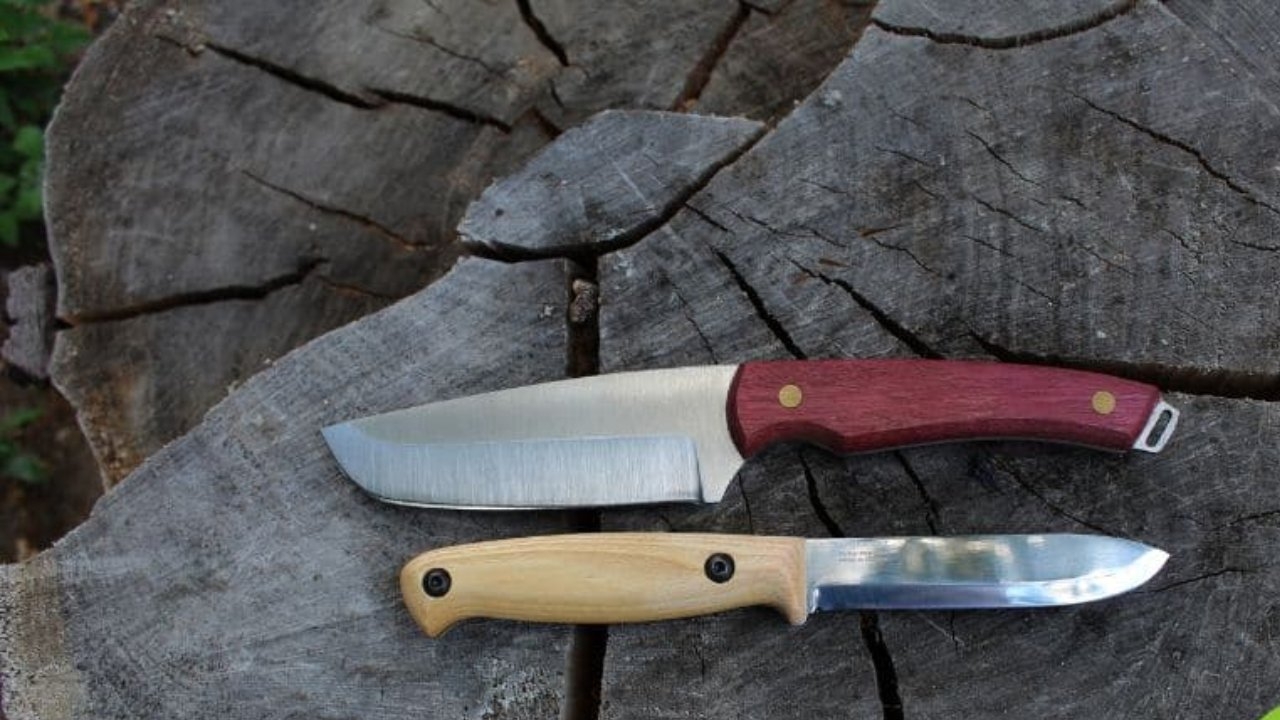If you are an avid knife maker, blacksmith, or a metallurgist then there is a great possibility that you have also heard of the term 1066 carbon steel.
However, do you know what makes this steel special from others? In this article we will discuss all the details of 1066 carbon steel, its composition, properties and the areas of its application.
Composition of 1066 Carbon Steel

1066 carbon steel is classified as high carbon steel. In other words that just means that it contains a greater amount of carbon than lower grade steels. The carbon content in the steel is a big deal as to how strong and hard the steel is going to be. This makes it extremely strong and has the hardness that one needs when faced with tough and demanding tasks.
Its properties are dependent on its chemical composition where each element has a different effect on overall properties. Below is a table containing the typical composition of 1066 carbon steel and what each component does:
| Element | Composition (%) | Notes on Contribution |
| Carbon (C) | 0.60–0.71 | Increases hardness and strength, improves wear resistance. |
| Manganese (Mn) | 0.85–1.15 | Increases hardness and tensile strength; acts as a deoxidizer during steelmaking. |
| Silicon (Si) | ≤0.40 | Enhances strength; contributes to hardness; improves magnetic properties. |
| Phosphorus (P) | ≤0.04 | Usually considered as an impurity; may increase the strength, but reduce the ductility. |
| Sulfur (S) | ≤0.05 | Normally considered an impurity, it may improve machinability but reduce toughness. |
Mechanical Properties

The 1066 carbon steel is widely known for its strong mechanical properties, rendering it suitable for strength and durability applications. Here is a table summarizing its principal mechanical characteristics:
| Property | Value | Notes |
| Tensile Strength | Approximately 925 MPa | This is the maximum stress the steel can withstand when it is being stretched or pulled. |
| Yield Strength | Approximately 655 MPa | The point of stress when the steel begins to deform plastically, |
| Elongation | Around 15% | How far the steel can be stretched before snapping. |
| Hardness | Approximately 335 HB (Brinell Hardness) | Reflects the material’s resistance to indentation and wear. |
Optimizing 1066 Steel Through Heat Treatment

Working with 1066 carbon steel? If so, you’ll want to pay attention to heat treatment. It is the secret for realizing the full potential of the steel. That’s how you adjust the hardness, strength and flexibility of the steel to suit your requirements. This step helps you with the right balance whether you are making tools or blades. The primary heat treatment methods applicable to 1066 carbon steel include:
1. Annealing
If you want your 1066 steel to be more workable, annealing is a good place to start. You heat it above the critical temperature, which may be in the 800°C to 900°C range. Then allow it cool down slowly inside the furnace to do its thing. This smooths out the internal structure of the steel. The result? Material that’s softer and way easier to cut, shape, or machine.
2. Normalizing
To normalize your steel, you heat your steel a bit hotter than usual, between 850 to 950°C. This is about 40°C above its upper critical temperature. When it reaches that point you just let it naturally cool in the open air. This treatment refines the grain structure and improves the mechanical properties which creates a more uniform and tougher material to the one produced through annealing.
3. Quenching and Tempering
In order to harden your steel, you will have to undergo a process referred to as quenching. It is first heated to its austenitizing range (normally between 800°C and 900°C). Afterwards, plunge it into oil or water to cool it down quickly. It turns the microstructure to martensite, which gives hardness a considerable boost.
However, since quenched steel is usually far too brittle for practical use, it is normally then tempered. Tempering consists of reheating the quenched steel to a temperature between 150 °C —700 °C and cooling at a controlled rate. The quenching and tempering combination allows precise tailoring of mechanical properties to meet specific application requirements.
4. Spheroidizing
To spheroidize, the steel is heated just below the critical temperature (about 700°C) for a long time and then slowly cooled. This process enhances formation of spheroidite microstructure of rounded cementite particles in a ferrite matrix which leads in a better machinability and ductility. Of particular value for high carbon steels such as 1066, spheroidizing is the best solution for further machining or cold forming processes.
1066 carbon steel can really be something when heat treated properly. It helps you ramp up a strength, to gain some flexibility, or imbue something with more toughness, whatever the project requires. In this way, the steel is ready for all kinds of tough industrial use.
Advantages and Limitations

1066 carbon steel has good reason to become an indispensable tool in so many industries. It has a load of credible and versatile characteristics. Regardless of job, it is generally a savvy material to go for. Here are the advantages:
1. Excellent Toughness
Toughness of 1066 carbon steel is high and it is able to sustain impact or chipping. This durability allows it to be very durable in heavy duty tools applications that require resilience.
2. Good Edge Retention
1066 steel has a carbon content approximately 0.60-0.71%, which means it continuously retains its sharp edge for a longer duration. This property is specific to cutting tools and knives, lessening sharpening frequency while providing greater efficiency.
3. Ease of Sharpening
Although 1066 carbon steel is hard, it is fairly easy to sharpen. A razor-sharp edge can be quickly restored using standard sharpening tools making maintenance quick and easy.
4. High Strength and Durability
1066 steel has impressive tensile strength and wear resistance due to its composition. The properties of this steel assure products produced from this steel to withstand great stress and have the capability to hold integrity over time, which qualifies for the use in the demanding industrial applications.
5. Cost-Effectiveness
In comparison to some high-end steels, 1066 carbon steel offers performance and value in a balance that few materials can achieve. It is affordable, and this makes it a good option for manufacturers and consumers who would want to get quality without much cost.
Applications of 1066 Carbon Steel

What is special about 1066 carbon steel is its high amount of carbon. That gives your steel the right balance: hard enough to withstand the pressure, yet tough enough not to break. That’s why most people use it in heavy duty applications. Notable uses include:
1. Knife and Blade Manufacturing
The steel claim super sharp edge and durability during vigorous use, which makes them preferred for the manufacture of knives, machetes and axes. This toughness makes blades durable and unlikely to chip no matter how much they are hit, so both professionals and recreational users can depend on these items.
2. Cutting Tools
Cutting tools such as chisels and gouges are commonly produced using 1066 carbon steel. It is because of its hardness and superior wear resistance that these tools can retain longer cutting edges and therefore better performance with less need for frequent sharpening.
3. Spring Components
The steel has a high tensile strength and flexibility, and is therefore suitable for the manufacture of leaf and coil springs used in the automotive and industrial applications. The material is capable of withstanding repeated stress without permanent deformation and these springs can take advantage of this.
4. Gears and Sprockets
The 1066 carbon steel is used in machinery gears and sprockets because of its strength and wear resistance. The materials required for these components have to be able to withstand high loads as well as handle the wear over time to ensure the longevity and reliability of mechanical system.
5. Hand Tools
1066 carbon steel is also ideal by virtue of its long life and good edge-keeping for hand tools such as hammers, wrenches and screw drivers. The steel’s resistance to impact and ability to continue to function for long durations is beneficial to these tools.
Conclusion

When compared with other carbon steel, 1066 carbon steel has the excellent balance of hardness, toughness and good wear resistance, so it is widely used for manufacturing knives and blade, automotive components and industrial machinery parts. It has a high carbon content, allowing it to reach and preserve a sharp edge and possesses strength for durability in stressful conditions. However, to make the most of these advantages, proper heat treatment and careful maintenance are required, especially to prevent it from corroding. Understanding and applying these principles will allow you to make the best of the robust qualities of 1066 carbon steel in their respective fields.
FAQS

What is the difference between 1066 carbon steel and 1095 carbon steel?
With lower carbon content, 1066 carbon steel is tougher than 1095, but slightly less hard and not as edge-retaining.
Is 1066 carbon steel any good?
1066 carbon steel is impressively durable, which is something you can count on. It is such a popular pick for knives and cutting tools due to that. It is strong under pressure, and continues to perform.
What materials are equivalent to 1066 carbon steel in other grading systems?
The 1066 carbon steel is almost identical to European 65G (65Г) steel.
Are there any downsides to using 1066 carbon steel?
It is susceptible to corrosion if it is not properly maintained and requires precise heat treatment to attain desired mechanical properties.
Is 1066 carbon steel magnetic?
Yes, as is the case with other carbon steels, 1066 carbon steel is magnetic.



